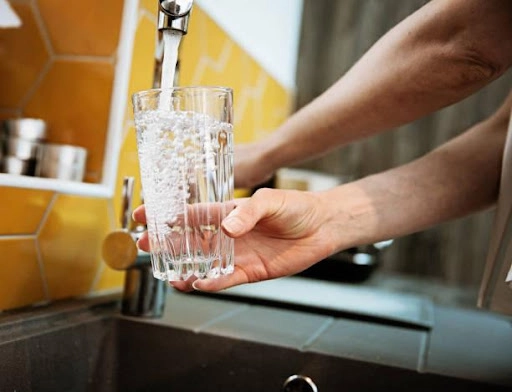Do you ever wonder what could be lurking in your everyday water?
From heavy metals and microplastics to bacteria, the list of impurities that exist in your water supply is endless— and their potential risks, are alarming! Before you learn how to treat your water at home, it's important to have an idea of what you are up against.
In this article, we’ll look at common contaminants in drinking water in your home and the most effective ways to remove them. Continue reading.
The list of contaminants that could be in your water
There are several examples of water pollutants, and some are more harmful than others.
Here's what you need to know about the types of water pollutants and how they can affect your health.
Chlorine
Chlorine is a naturally occurring element in water, but it's also added to many municipal water systems to help kill bacteria and viruses — which are examples of biological contaminants in water.
But while chlorine can kill harmful microbes in water systems, excess usage can cause health problems like dry, itchy skin, diarrhea, stomach ache, and vomiting.
Mercury
Mercury is also a naturally occurring element that can be found in soil and rocks. It also occurs naturally in some fish, such as tuna and swordfish, as well as plants and animals at certain levels of concentration.
The concern with mercury is that it can cause neurological problems such as memory loss, tremors and difficulty speaking or walking. You may not notice symptoms immediately after exposure but they can show up years later when you're older or when something else triggers them (like an injury).
Lead
Lead is a metal that can poison your body through ingestion or inhalation. This contaminant in water can cause brain damage, kidney damage, and even nervous system damage if it’s too high of an exposure level.
Lead leaches out of old pipes and solder into the water supply, which means it will make its way into your home through faucet handles and plumbing fixtures. Lead has been known to cause seizures in children and adults alike.
Copper
Copper is another metal that can be found in drinking water supplies; however, this one is not nearly as common as lead.
Copper is used for plumbing systems such as hot water heaters and kitchen appliances like dishwashers and coffee makers because it does not corrode easily as other metals do over time (which makes it ideal for plumbing systems). Unfortunately, copper also leaches into the water supply from these same appliances over time and is one of the substances that can contaminate water.
Pesticides
Pesticides are chemical compounds used in agriculture and residential settings to control pests. They can enter your water supply through runoff from nearby fields and gardens, seepage from landfills, and even accidental spills. Some of these chemicals can be dangerous to your health.
Pharmaceuticals
Pharmaceuticals can also be found in your water supply despite their toxicity; they’re often used during wastewater treatment processes to reduce the number of suspended solids and other pollutants in wastewater before it’s returned to drinking water sources.
Water pollution chemicals can build up in lakes and reservoirs where they don’t break down naturally over time – which means you could be drinking these chemicals present in water every day without knowing it!
Fluoride
In places like the US, fluoride is added to municipal water supplies because it helps strengthen the teeth and reduce cavities.
However, a high concentration of fluoride in water is not without health risks. Excess fluoride has been linked with bone fractures and dental fluorosis (discoloration of teeth), as well as maternal anemia, and damage to the kidneys and immune system — among other problems.
Chloramines
Chloramine is another chemical byproduct created when chlorine combines with ammonia from human waste or animal urine. Chloramine is used to disinfect public swimming pools but it can also contaminate groundwater if it leaks into a well during construction or maintenance work on an aquifer.
Negative effects of waterborne contaminants on health
Waterborne contaminants are the most common way people become ill, especially how much water we drink in a day.
Its effects vary depending on the type of contaminant and how much you consume. Some pollutants, such as lead and arsenic, are more harmful than others, such as coliform bacteria.
Coliform bacteria can cause diarrhea and other gastrointestinal problems in some people who drink contaminated water. Other contaminants can cause skin rashes, nausea, vomiting, or headaches.
In addition to causing illness, toxicants in water may also increase your risk for other health problems like muscle cramps or rashes from exposure to sunlight.
How to improve the quality of water at home
If you're drinking water that tastes bad or has a strange color, you should consider installing a filter to reduce mineral deposits and improve the taste.
Reverse osmosis (RO) filter for water by Filterway, for example, is a fantastic way to improve the quality of your drinking water at home. It removes 99% of the contaminants in your tap water like chlorine, fluoride, heavy metals, and more, which is one of the major advantages when considering filtered water vs boiled water.
Conclusion
Water is a precious resource, and information about possible contaminants in your drinking water is important to safeguard your health.
If you're concerned about the quality of your water, a filter system is a good investment. It ensures that your drinking water is safe, odorless, and tastes fresh. Not only will it protect your family's health and well-being, but it can also save you a lot of money.














